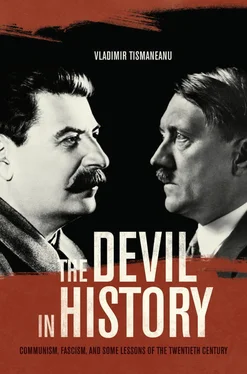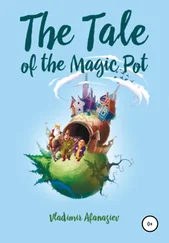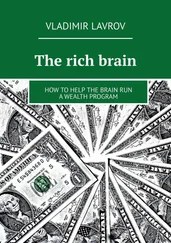To come back to my earlier argument, the comparison between Communism and Fascism has been fundamentally tainted, intellectually and scholarly, both by the claim of the original innocence of Leninism (or the so-called ultimately humane and positive Communist utopia) 49and by anti-Fascism’s long-standing, resounding failure to denounce the murderousness and illiberality of Communist regimes. Additionally, the experience of the Second World War in various Western countries, with its violence, collaboration, treason, and often limited resistance to the Fascist occupier, left a muddled vision of justice. For example, in the case of postwar France, Tony Judt demonstrated convincingly that “the absence of any consensus about justice—its meaning, its forms, its application—contributed to the confused and inadequate response of French intellectuals to the evidence of injustice elsewhere, in Communist systems especially.” 50
Nevertheless, I consider legitimate the questions raised by historian Anson Rabinbach on the legacy of a tradition that is part and parcel of the present European identity: “Is it possible to go beyond a confrontation between antifascism as a state-sponsored myth mobilized to disguise the crimes of the ‘first’ (Soviet) antifascist regime, and antifascism as a necessary and heroic moment in the history of the West’s resistance to totalitarianism in its first phase? Can we come to a different judgment than the mutually exclusive perspectives of 1936 and 1989?” 51My answer, and the discussion that follows serves as an example, is positive, in the sense that the reassessment of the history of the twentieth century’s totalitarianisms provides us with lessons and values for the safeguard of democracy and freedom on both the left and the right. Anti-Fascism and anti-Communism are logical reactions to the experiences and realities of a ravaged century. 52
THE BLACK BOOK OF COMMUNISM AND ITS IMPACT
One of the most important moments for the reevaluation of the role played by Communism (as both an ideology and a regime type) was the publication of The Black Book of Communism and the subsequent debates (in France, Germany, the United States, and so on) generated by this volume and its theses both in the public sphere and among academics. The book initially came out to an enormous success in France, where it sold over 200,000 copies. Its Italian and German translations also became best sellers. The publication of the book in East-Central Europe led to endless polemics and discussions regarding the responsibility for, complicity with, and consequences of Communist crimes. What The Black Book of Communism succeeded in demonstrating is that Communism in its Leninist version (and, one must recognize, this has been the only successful application of the original dogma) was from the outset inimical to individual rights and human freedom. As Martin Malia stated in the foreword to the American edition: “The communist regimes did not just commit criminal acts (all states do on occasion); they were criminal enterprises in their very essence: on principle, so to speak, they all ruled lawlessly, by violence, and without regard for human life.” 53In spite of its overblown rhetoric about emancipation from oppression and necessity, the leap into the kingdom of freedom announced by the founding fathers turned out to be an experiment in ideologically driven, unbounded social engineering. 54The very idea of an independent judiciary was rejected as “rotten liberalism.” The party defined what was legal and what was not: as in Hitler’s Germany, where the heinous 1935 Nuremberg Laws were a legal fiction dictated by Nazi racial obsessions, Bolshevism from the outset subordinated justice to party interests. For Lenin, the dictatorship of the proletariat was rule by force and unrestricted by any law. His famous reply to Kautsky speaks volumes about the true ethos of his ideology: “The revolutionary dictatorship of the proletariat is rule won and maintained through the use of violence by the proletariat against the bourgeoisie, rule that is unrestricted by any laws.” 55
The class enemy had to be weeded out and destroyed without any mercy. Andrei Vyshinsky, Stalin’s hysterical prosecutor in the Moscow show trials of the 1930s, carried this macabre logic to its ultimate consequences when he made the defendants’ confessions the main argument for sentencing them to death. In other words, the presumption of innocence was replaced by a universalized presumption of guilt. As for the rhetoric of hatred, comparable to Goebbels’s most insanely inflammatory speeches, this passage is worth quoting:
Shoot these rabid dogs! Death to this gang who hide their ferocious teeth, their eagle claws, from the people! Down with that vulture Trotsky, from whose mouth a bloody venom drips, putrefying the great ideals of Marxism! Let’s put these liars out of harm’s way, these miserable pygmies who dare to dance around rotting carcasses! Down with these abject animals! Let us put an end once and for all to these miserable hybrids of foxes and pigs, these stinking corpses! Let their horrible squeals finally come to an end! Let’s exterminate the mad dogs of capitalism, who want to tear to pieces the flower of our new Soviet nation! Let’s push the bestial hatred they bear to our leaders back down their throats! 56
Both totalitarianisms “believed in the ubiquity of maleficent adversaries.” Both defined their enemies on the basis of their potential for blocking the realization of the perfect community. Their obsession with eliminating all “objective enemies” on the road to the promised land led first to the replacement of “the suspected offense by the possible crime” (Hannah Arendt), and then to an all-out fixation on universal conspiracies. 57
Utopian ideals were used to legitimize the worst abuses against “objective” enemies, defined only in connection with the interests of a self-appointed revolutionary vanguard and the leader’s fixations. In Nazi Germany, Hitler’s Aryan-centered cosmology hyperbolized the imaginary Jew as simultaneously the organizer of market exploitation and the fomenter of Marxist attempts to overthrow it. 58The mythology of the Judeo-Bolshevik and Judeo-plutocratic plot thrived in the anti-Semitic visions of the East and Central European Far Right (later to reemerge in post-World War II Stalinist anti-Semitism). 59Paranoia regarding infiltrations, subversion, and treason have been enduring features of all Communist political cultures, from Russia and China to Romania and Yugoslavia. Leninist parties officially playing the democratic parliamentary game (in France and Italy after World War II) were no less intolerant of deviation from the orthodox line than similar formations in power (with the difference that they could not physically liquidate alleged spies and agents). Lenin once famously declared that “an organization of real revolutionaries will stop at nothing to rid itself of an unworthy member.” 60
Perhaps the best book to read for understanding the nature and meaning of Leninism remains Dostoyevsky’s novel Demons. The great Russian writer and political-religious thinker grasped the ominous consequences of nihilistic, extremist revolutionary actions undertaken by ecstatic apostles of universal liberation. 61Indeed, the chapter on Russia in The Black Book as well as Martin Malia’s foreword show how Bolshevism had deep roots in the culture of apocalyptical extremism of the Russian revolutionary intelligentsia. Its morality was embodied only in the “solid, united discipline and conscious mass struggle against the exploiters” (Lenin). There is only a small step from such destructive dedication to criminal single-mindedness. In August 1919, the organ of the Cheka, Krasnyi Metch , provided a vision of red horizons for humanity under the impact of the Great October Revolution: “For us everything is permitted, for we are the first in the world to wield the sword not to oppress and enslave, but to liberate mankind from its chains…. Blood? Let blood flow!” 62This is the very essence of Leninism as a totalitarian movement: the conviction that it was building a new civilization, that it was the repository for the discrimination between good and evil, the interpreter of a new truth. 63
Читать дальше












